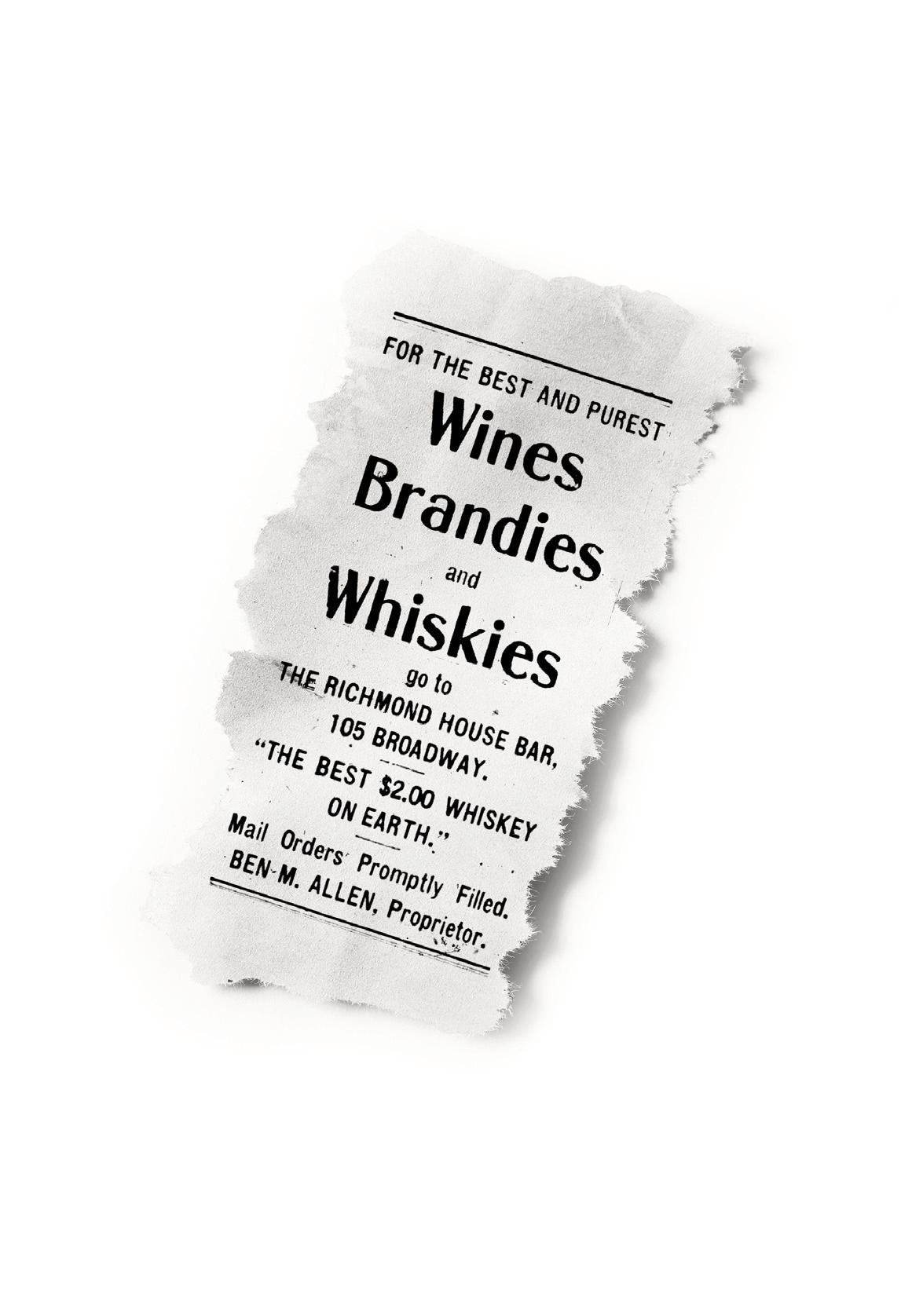
2 minute read
BROADWAY THE 100 BLOCK OF
located at 100 Broadway—a plot of land that sold for $12 in 1827. The original building was wood-frame, had 18 rooms, depended on drawing water from a well, utilized outhouses, and housed the city’s pioneering post office. The hotel underwent several expansions within a short amount of time, and a brick veneer was added. Gas lights created a glow both inside and outside of the blossoming hotel, and owners added a hand-cranked elevator.
Years later, in 1861, General Grant seized Paducah for the Union Army, and business boomed. That spring, before Grant’s occupation, a Confederate solider wrote that upon arrival, their company “marched directly to the St. Francis Hotel, kept at that time by a strong Southern rights man named Shields. The hotel was thrown wide open to our company. We were wined and dined until late at night.” When Grant and Union forces arrived months later, they found a Confederate flag flying atop the hotel. As Grant read his proclamation to the citizens of Paducah, General E.A. Paine entered the hotel to have the flag removed.
Not long after the war, and after a couple of changes in ownership, the hotel had a new name—the Richmond House. And it had grown to 54 rooms. The Richmond House was known as one of the finest hotels on the inland riverways, drawing comparisons to those in St. Louis and Cincinnati.
Ancillary businesses flourished in the hotel. There was a barber. There was what was considered to be one of the finest bars around where the proprietor ran a mail-order whiskey business. A lottery along with a betting house was run from the lobby where it is estimated up to $8,000 changed hands daily. With additional renovations, a chef from St. Louis was recruited to run the hotel restaurant.
The Richmond House, later known as The New Richmond House after a change in ownership, was also a central meeting place. It was one of the first stopping points for visitors, even if they weren’t staying there. Locals also used it as a gathering spot. Couples John W. Keiler and Miss Blanch Friedman, as well as Joseph L. Friedman and Miss Elizabeth Keiler, held their wedding receptions there in a ballroom that boasted a walnut mantle and fireplace along with 30-inch tall wainscoting along the walls. It is where the City of Paducah signed the first railroad bonds for the Illinois Central Railroad. Musicians, performers, and singers stayed there as they traveled through the area or stopped to perform in Paducah. One couple was Louise and William Cody, the real Buffalo Bill. The hotel name was changed to its final moniker, the Southern Hotel, in 1917 by a new proprietor. A hotel by that name had previously existed just a couple of blocks away.
Broadway from Water Street in 1975. On the immediate right where pipes are stacked once sat the New Richmond House Hotel.










